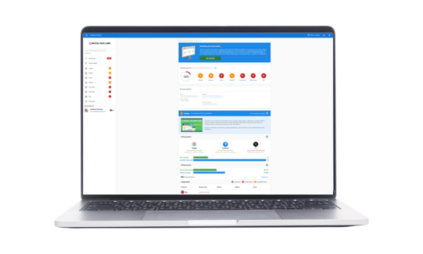Proven low-cost advertising strategies for startups

Startups are often characterized by their tight budgets and ambitious goals. With limited resources and fierce competition, figuring out cost-effective advertising strategies isn’t just a good idea—it’s essential for survival. Success doesn’t require a magic formula; it requires smart decisions, a clear focus, and a willingness to learn and adapt.
This guide will equip you with actionable strategies to implement advertising campaigns that deliver results without exhausting your budget. Let’s dive in.
Understanding your target audience: The foundation of effective advertising
Before launching any advertising campaign, ask yourself: Who am I talking to? Misunderstanding your audience can lead to wasted money and missed opportunities. Your audience is the cornerstone of your advertising efforts.
Why audience research matters
Every dollar spent on advertising should be targeted toward reaching the right people. You’re not just broadcasting messages; you’re trying to connect with individuals who genuinely need or want your product. Understanding your audience allows you to craft messages that resonate, build trust, and drive action.
Steps to understand your audience:
- Conduct thorough market research:
- Use tools like Google Trends, Facebook Audience Insights, and social media analytics to gather demographic and behavioral data.
- Conduct surveys and interviews to understand their pain points, preferences, and challenges.
- Create buyer personas:
- Develop profiles for your ideal customers, including:
- Demographics: Age, gender, location
- Psychographics: Interests, values, motivations
- Behavior: Buying habits, preferred communication channels
- Define your Key Performance Indicators (KPIs):
- Determine metrics to measure success, such as website traffic, leads, conversions, and cost-per-click (CPC).
- The more detailed your understanding of your audience, the more impactful your advertising efforts will be.
Low-cost advertising channels with high ROI
- Instead of spreading your budget thin across every possible advertising platform, focus on channels where your audience already spends time. These cost-effective strategies can yield impressive returns for startups:
1. Content marketing
- What it is: Creating valuable, high-quality content like blog posts, videos, and infographics to attract and engage your audience.
- Why it works: Content marketing builds brand authority and drives organic traffic over time.
- Tips:Focus on evergreen content that remains relevant.
- Address common questions and pain points.
- Promote your content on social media and through email newsletters.
2. Search Engine Optimization (SEO)
- What it is: Optimizing your website to rank higher in search engine results.
- Why it works: SEO drives free, long-term traffic to your site.
- Tips:Use tools like Ahrefs or SEMrush to identify long-tail keywords with low competition.
- Optimize your site’s metadata, headings, and images.
- Regularly update your blog with relevant, high-quality posts.
3. Social Media Marketing
- What it is: Using platforms like Instagram, LinkedIn, and TikTok to connect with your audience.
- Why it works: Social media lets you build relationships and reach potential customers directly.
- Tips:Post consistently and engage with your followers.
- Experiment with short-form video content (e.g., Reels or TikToks).
- Use paid ads strategically—start small and A/B test your creatives.
4. Email marketing
- What it is: Sending targeted emails to nurture leads and drive conversions.
- Why it works: Email marketing has one of the highest ROIs of any channel.
- Tips:Offer a valuable lead magnet (e.g., free eBook or checklist) to grow your list.
- Personalize your emails based on user behavior.
- Use automation tools like Mailchimp or ConvertKit to streamline campaigns.
5. Influencer marketing
- What it is: Partnering with influencers to promote your product or service.
- Why it works: Influencers have established trust with their followers.
- Tips:Focus on micro-influencers with smaller but highly engaged audiences.
- Offer free products or a small fee in exchange for a review.
Advanced cost-effective advertising techniques
- Once you’ve mastered the basics, consider adding these advanced strategies to your arsenal:
1. Retargeting Ads
- What it is: Showing ads to people who’ve already interacted with your brand.
- Why it works: Warm audiences are more likely to convert.
- Tips:Use platforms like Google Ads or Facebook Ads for retargeting.
- Create tailored ads based on user behavior (e.g., “You left this item in your cart!”).
2. Affiliate marketing
- What it is: Partnering with affiliates who promote your products in exchange for a commission.
- Why it works: You only pay for results.
- Tips:Join affiliate networks like ShareASale or CJ Affiliate.
- Provide your affiliates with high-quality marketing materials.
3. Co-marketing partnerships
- What it is: Collaborating with complementary brands to create joint campaigns.
- Why it works: You expand your reach without doubling your spend.
- Tips:Partner with businesses targeting a similar audience but offering different products.
- Share resources like email lists or blog audiences.
Frequently asked questions
How much should I spend on advertising as a startup?
- Start small and scale up. Allocate 10-20% of your revenue or initial budget to marketing, then focus on the channels that deliver the best ROI.
What if my advertising isn’t working?
- Don’t panic. Advertising is iterative. Analyze your results, identify weak spots, and tweak your campaigns. Often, small changes (e.g., adjusting your targeting or creative) can yield big improvements.
What are some free advertising options?
- Focus on organic strategies:
- SEO and content marketing
- Social media engagement
- Building a referral program
Final thoughts: Work smarter, not harder
- Cost-effective advertising is about being resourceful, not cutting corners. By understanding your audience, leveraging high-ROI channels, and continuously optimizing, you can unlock significant growth without blowing your budget. Remember, it’s not about spending more; it’s about spending smarter.

Ready to take the next step? Get your FREE digital marketing audit here. We’ll help you identify the most cost-effective strategies for your unique business needs.

